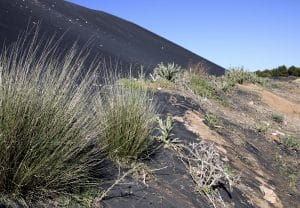toto project
Several recent studies show that the geographical distribution of many continental species can be explained by a limited number of intercontinental dispersals, and that these dispersal events will become increasingly frequent in the face of current climate change.
The mechanisms controlling these dispersals are still poorly understood, and overwater dispersals are currently considered to be a very rare and often random process.
Yet there are several examples of intercontinental dispersal that appear massive and coordinated. Recent palaeontological findings show that during a short period of climatic upheaval 40-35 million years ago, anthropoid primates and rodents crossed 500 km of the Neotethys Ocean to reach Africa from Asia, and then 800 km of the Atlantic Ocean to reach South America.
The DISPERSAL project aims to build a theoretical and empirical basis for the mechanisms of inter-oceanic dispersal by answering these simple questions: How did primates and rodents cross two oceans? Were these dispersals controlled/promoted by tectonic and climatic factors? Can we model (and predict) their dispersals?
DISPERSAL is directed by Alexis Licht (CNRS Research Fellow, CEREGE) with numerous collaborators from French laboratories (CEREGE in Aix-en-Provence, CR2P in Paris, Geosciences Rennes, ISEM in Montpellier, LSCE in Orsay) and foreign laboratories (Kansas University, Vrije Universiteit in Amsterdam, University of Geneva, Roma Tre Universita, Utrecht Universiteit). The project has six parallel components:
- Refinement of the palaeontological record of Neotethyan primates and rodents from the Eocene
- Acquisition of several paleobotanical archives to trace the evolution of ecosystems along the dispersal corridor
- Acquisition of several geochemical and sedimentary archives to understand the climatic evolution during the dispersion
- Construction of high-resolution paleogeographic maps exploring all likely dispersal routes
- Simulation of Eocene climate and ocean currents to test the validity of different routes and dispersal modes
- Development of a probabilistic modelling tool for ecological niche connectivity and its application to Eocene primates.
The funding of the project is spread over the period 2022-2027 and includes the hiring of two PhD students, three postdoctoral fellows and a research engineer, as well as the acquisition of a clumped isotope analysis line at CEREGE.
2022-2027: CoG Dispersal (ERC)
CEREGE lead :
Alexis Licht
Climatic and paleogeographic controls on intercontinental mammal dispersal
Partners CEREGE in Aix-en-Provence, CR2P in Paris, Geosciences Rennes, ISEM in Montpellier, LSCE in Orsay
Foreign collaborators: Kansas University, Vrije Universiteit in Amsterdam, University of Geneva, Roma Tre Universita, Utrecht Universiteit






